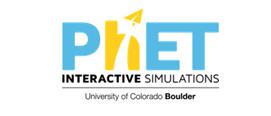Atomic Physics
Learning about atomic physics and radioactive decay can cause challenges as it requires students to describe and explain phenomena that they cannot see (decay) in terms of an atomic model that is also invisible to them. One approach, suggested by the University of Your Science Education group is to begin with exploring the effects of radioactive decay, move on to a qualitative macroscopic treatment considering what happens when radiation is absorbed. Then you move on to a quantitative macroscopic treatment covering content such as exposure, half-life and the drop of gamma intensity with distance. Once this has been covered then an explanation on an atomic level can be provided. Even if you don’t take this approach a secure understanding of the particle model is important and so is well worth revising.
The historical development of ideas provides an interesting narrative and this atomic model time line can help show the development of the model. Atomic structure, isotopes and ions can be supported with resources such as this interactive periodic table. Further exploration of electrons in different orbits and electrons changing orbit leads to emission and absorption spectra. Simulations, such as this one can help students visualise the random nature of decay. The terms contamination and direct irradiation are often confused by students and so care is needed when defining these terms.
There is an opportunity here to cover the maths skills by balancing equations, representing alpha-, beta- or gamma-radiations in terms of the masses, and charges of the atoms involved. As well as skills needed to calculate decays expressed as a ratio in a radioactive emission after a given number of half-lives.
In addition to the safety advice noted below, particular care and preparation is needed when handling radioactive sources and you should consult the designated school radiation protection supervisor before undertaking any practical work.
Whilst this list provides a source of information and ideas for experimental work, it is important to note that recommendations can date very quickly. Do NOT follow suggestions which conflict with current advice from CLEAPSS, SSERC or recent safety guides. eLibrary users are responsible for ensuring that any activity, including practical work, which they carry out is consistent with current regulations related to Health and Safety and that they carry an appropriate risk assessment. Further information is provided in our Health and Safety guidance.
- ALL
- Video
- Article
- Interactive resource
- External link
Video
Demonstrating Physics: Radioactivity
A descriptive and detailed video guiding a group of teachers through a range of experiments using Alpha, Beta and Gamma ionising radiation. The resource is aimed at how teachers can handle radioactive sources safely, and carry out effective experiments in the classroom.
Powering the Future
This Institute of Physics Schools lecture covers fusion as a stellar nuclear reaction and goes on to look at fusion reactors such as the how JET project at the Culham Science Centre in Oxfordshire. Watching this video with your students will lead to a healthy discussion the possibility of Earth based fusion reactors.
Half-life of a model radioactive source
In this video clip radioactive decay is modelled using the rolling of dice. The data are plotted on a graph and the half-life is determined.
Article
Models of the Atom *suitable for home teaching*
An article that investigates the history of models of the atom and discovers how, a century ago, scientists were devising models of the atom in an attempt to explain the limited evidence they had about the fundamental structure of matter.
Interactive resource
Build an atom
This simulation allows teachers to build an atom out of protons, neutrons, and electrons, and see how the element, charge, and mass change. Students can then play a game to test their understanding of the atomic model.
External link
Radiation Dose Chart *suitable for home teaching*
This link takes you to a radiation dose chart. The chart shows in a clear and visual way the amount of ionizing radiation a person can receive from different sources.
Isotopes and Atomic mass
This simulation allows the student to explore isotope possibilities. The neutron number can be varied showing the element is unchanged and the student can see the natural abundances of their creations.
Emission and absorption spectra
This video clip from Bozeman Science succinctly explains how electron orbital transitions give rise to both emission and absorption spectra.






